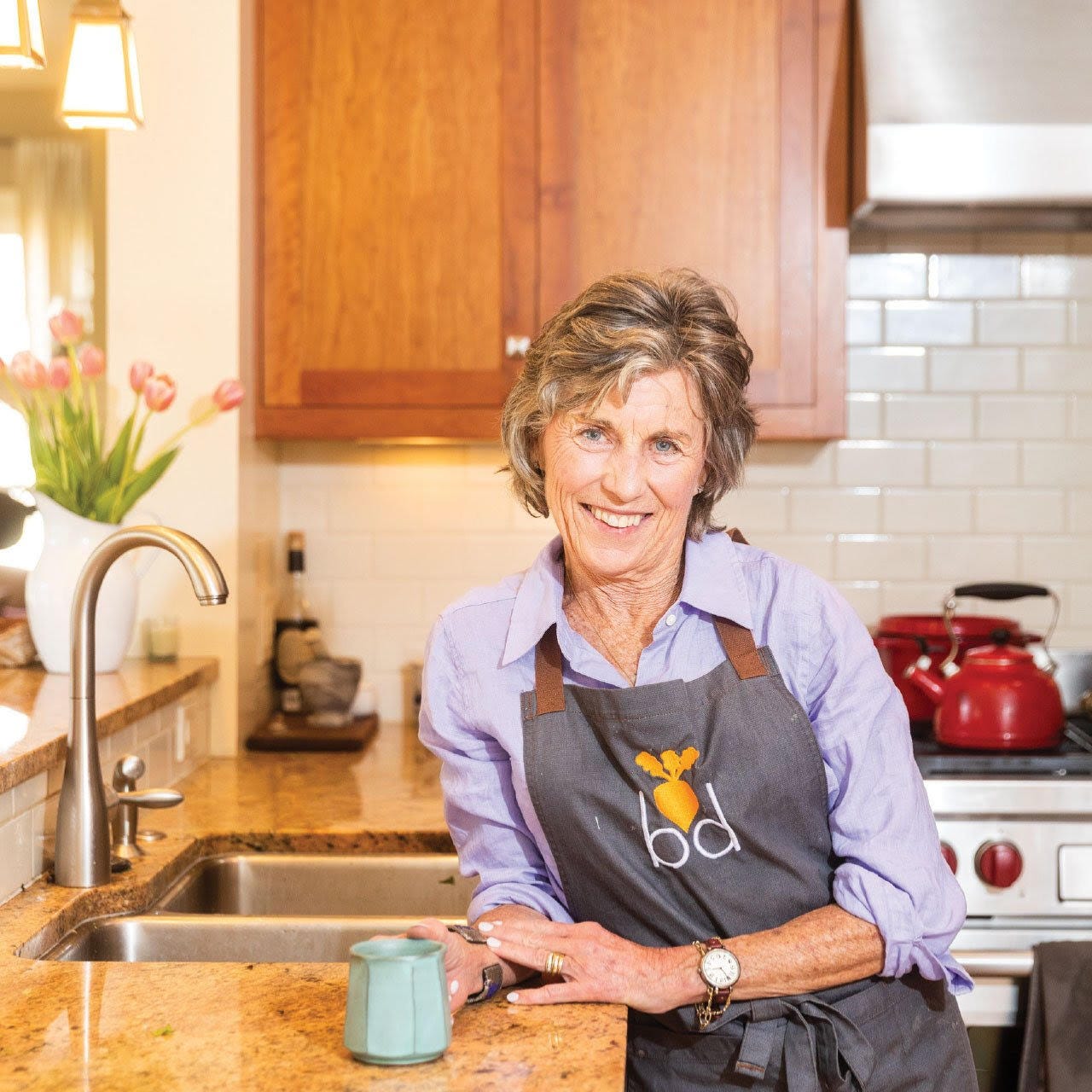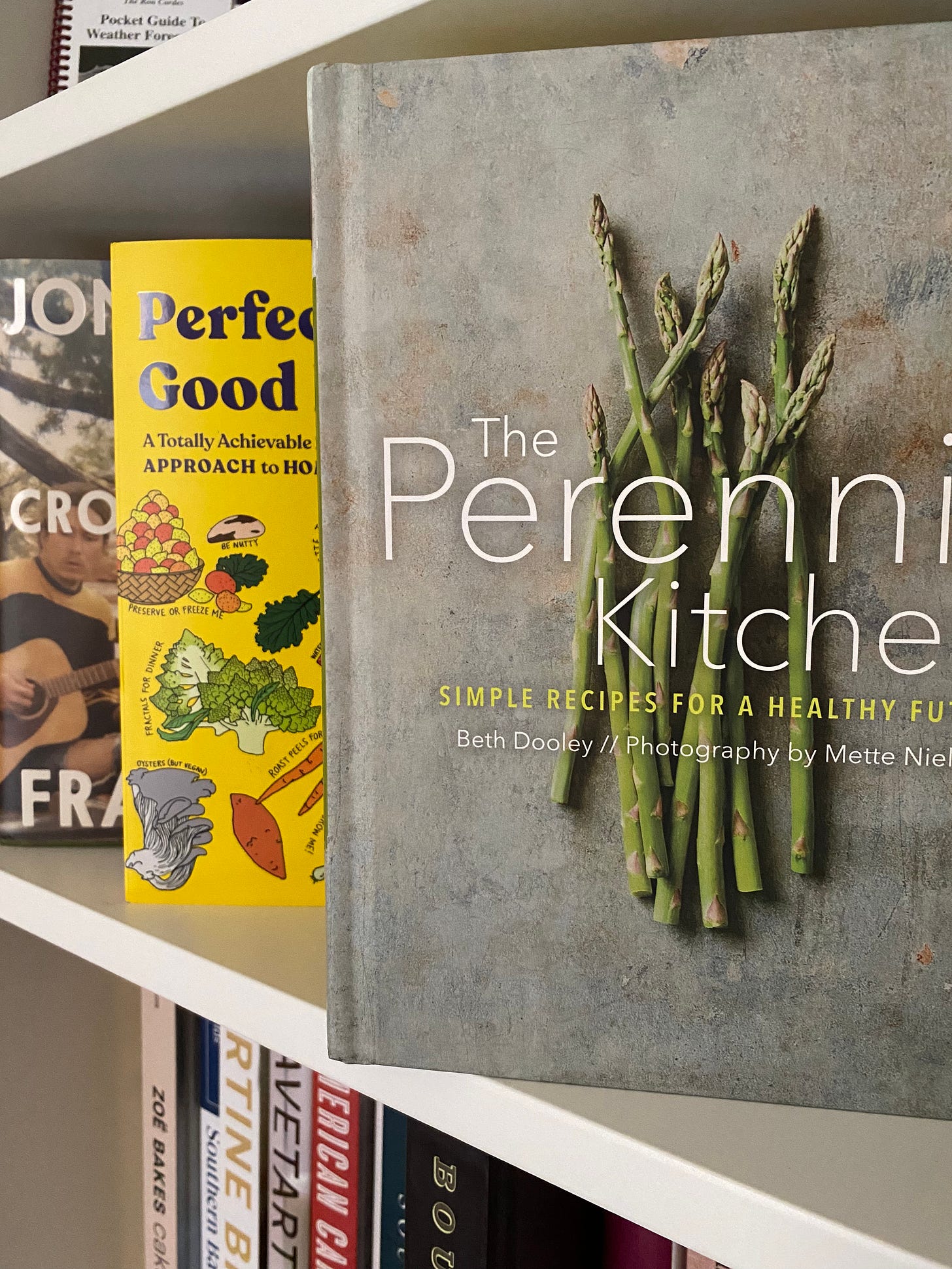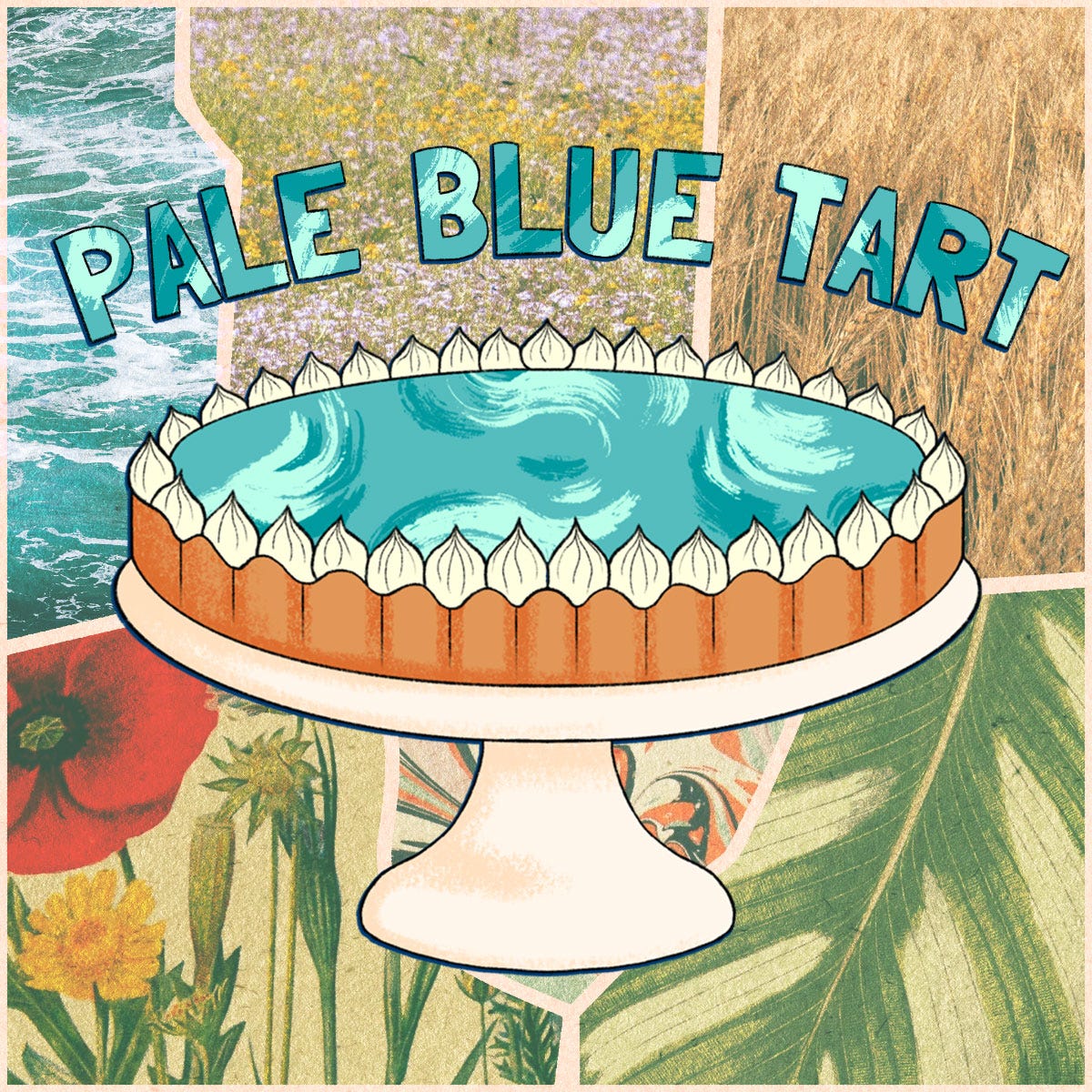Kernza could transform farming
But only if bakers get in on the flavor games
This is the latest in a periodic series on baking with climate-hero ingredients. You can also meet moringa and bake with buckwheat (we will alliterate or we will die trying!).
The smell wafting from my kitchen is almost like butterscotch, but the usual culprit for that smell, brown sugar, isn’t in the cookie bars I’m baking. Instead, the source of the aroma is Kernza, a grain unlike any other cultivated in America, because it’s a perennial.
Perennial crops could reverse the damage industrial farming has done to the soil and the climate, but scaling them up will be no small task for scientists, policymakers, and even the culinary tinkerers among us. Because in addition to questions about farming and funding, there’s another question to ask: What do you do with an ingredient that has no culinary past?
Against the grain
These days the grains we grow for food are annuals, which produce just one harvest before they have to be replanted. The soil is typically tilled, or churned, before the next crop goes in, a practice that releases carbon into the atmosphere and makes erosion as certain as death and taxes. This soil-disrupting style of farming requires lots of energy, water, and fertilizer to keep afloat, and it’s working on borrowed time. It’s estimated that we’re spending down the world’s topsoil reserve 100x faster than it can be replenished.
But perennial crops, which stay in the ground and produce harvests year after year, could change all that. And Kernza, a cousin of annual wheat domesticated by The Land Institute in Kansas, is the tip of the spear.
Until about 20 years ago, Kernza was a forage grass grown to feed livestock. That’s when crop breeders at The Land Institute began acting on a hunch that this grain could also feed people. Two decades of selecting for traits like yield later, Kernza is the first perennial grain you can buy in a smattering of food products like flour, cereal, and even beer.
Perennial grains would be a novel thing for agriculture, but not for the American landscape. Before colonization, perennial grasses covered the Great Plains, offering many of the same environmental advantages a crop like Kernza could. Kernza’s roots extend 10 feet underground, far outstripping the combover-like wisps of an annual root system, and locking the soil in place against the heavy rains that climate change is making more common in the heartland.
Kernza’s super roots have other advantages, Tessa Peters, the director of crop stewardship at The Land Institute, told me on my podcast two years ago. “Those plants are able to reach a water profile that's a lot deeper, so in years of drought, they can potentially do a lot better than annual crops because they can reach water at a deeper level. Another thing is that they have a potential to sequester more carbon, because those roots stay in the soil and are there longer.”
Kernza faces a long road to competing with the bread wheat flour that dominates American grain farming, grocery store shelves, and nearly every loaf of bread or slice of cake you’ve ever eaten. The perennial grain is currently grown on just 4,000 acres, compared to wheat’s 37 million, and the price reflects its niche status: one pound of Kernza flour runs about $11, compared to less than $1 for regular wheat.
When I checked in with Peters recently, she told me Kernza is still in a “pilot phase,” and it’ll take three things to graduate out of it: support from the federal government, buy-in from food companies large and small, and more acreage. That last problem is the easiest to solve. “We’ve never recruited a farmer,” she says. “They understand immediately what the benefit will be to having a perennial on their land. It’s more about making sure they have a stable market.”
The flavor game
A stable market will take more than altruism from a few food company CEOs. It’ll also require finding a place for Kernza in American food culture, which may be more challenging than for other climate-friendly foods. Most resilient and low-carbon foods—hardy grains like buckwheat and rye, plant-based proteins and egg substitutes like tofu and aquafaba—come from somewhere, gastronomically speaking. As climate-conscious Americans add more foods like those into their diets, they can look to other food cultures for recipe cues about any food that’s unfamiliar.
But Kernza has no such history. Because it was bred from a forage grass, it’s largely a blank slate, at least in the baking world. It’s a cousin of bread wheat, sure, but it acts and tastes differently in breads and desserts. So what do you do with an ingredient that has no culinary roots? The easiest answer might be in a slightly off-script version of what Ariel sang in The Little Mermaid: I want to go where the flavors are.
Only a few people are experts on Kernza’s distinctive flavor. One is Joe Kaplan, head of research and development for Perennial Pantry, which sells Kernza flour, pancake mixes, and other products online. Kaplan writes in a guide to baking with Kernza that its flavor profile is: “Honey, cinnamon, maple syrup, nuts, vanilla, butterscotch, almond extract, brown butter.” Those flavors can be signposts, pointing bakers in possible recipe directions. My mind goes to graham crackers, an especially nutty-flavored French tart crust, cinnamon PopTarts, and coffee cake.
Following the flavor breadcrumbs seems to be what Beth Dooley, a prolific cookbook author and food writer based in Minnesota, is thinking too. She has several Kernza recipes in her cookbook The Perennial Kitchen, and is sharing a butterscotchy favorite—and tips for baking with Kernza—below. But her culinary ideas and mine are just a starting point. Where else might Kernza go? That’ll take a lot more hungry bakers to figure out.
Q&A: Beth Dooley’s tips for baking with Kernza

Caroline: I think Kernza is pretty unfamiliar to most people. So maybe you could help orient us. When you think of baking with Kernza, what’s the first thing that comes to mind?
Beth: It has a flavor—a very distinct flavor. And that’s one of the things that makes it unique, and one of the reasons it’s really sort of a different product. I don’t think of it as just a flour.
Caroline: What do you think are some important basics to know about baking with Kernza?
Beth: First of all, if you look at the plant and look at the kernel itself, it has a different gluten content than does wheat. It’s closer to rye, which means that if you’re going to make a loaf of bread using 100% Kernza, it’s going to be very, very dense. And unlike rye, which tends to be very moist when you make a loaf of bread with it, it tends to be dry, so it’s a thirsty flour. You know you’re going to want to have more moisture in whatever it is you’re baking.
Caroline: So what does that mean for how you bake with Kernza, in both bread and in dessert-y stuff?
Beth: If you’re going to make a risen baked good, like a sourdough loaf or a yeasted loaf, I would suggest cutting Kernza with wheat flour (or a different flour that you’re used to baking with). The best results I’ve gotten have been with 40% Kernza and 60% something else—like a really strong flour, like bread flour or a heritage flour like Turkey Red, which works really well with it. Kernza also makes wonderful pancakes, and you can use the same ratio.
And then I’ve found I can use 100% Kernza in cookies or in bars. It’s really good in a toffee bar, or a chocolate chip cookie bar, or a bar that has some kind of jam on it. You can go 100% Kernza with something that doesn’t have any leavening in it.
Caroline: Same. I’ve realized I can use all-Kernza in flat things.
Beth: Yes! And what’s also great in anything you bake with Kernza is that you can really taste it. Kernza absorbs butter differently. I think it almost gets like a really rich, buttery, dense flavor that almost tastes like toffee. The Kernza flavor itself is kind of nutty, maybe just a little grassy—it reminds me of some of the flours I’ve had when I’ve been to Ireland, like a little sort of graham-iness to it. It’s delicious. I like using it in cookies or in bars, because it’s expensive, so you might as well use it in a way that really shines a light on the flavor of the grain itself.
Caroline: Is there a Kernza recipe from your cookbook that you’d recommend as a starting point for someone new to baking with Kernza?
Beth: I love it in toffee bars. I think that’s my favorite use for it.
For something like a toffee bar, it’s not technique-driven. We’re not making something that requires a sheeter, or layers and layers, or any of that kind of stuff. So it’s a great way to engage kids in baking, because it’s simple and it’s got so many stories about what it can do for the planet.
Recipe: Kernza Toffee Bars
Reprinted with permission from The Perennial Kitchen.
Beth’s recipe headnotes: Careful: these are super rich and it’s too easy to eat too many! [Caroline’s note: Can confirm.] Toffee bars are delicious for an afternoon snack and fine for a fancy dessert. They will store in an airtight container for up to 10 days.
Makes about 32 bars
Ingredients
½ cup hazelnuts, pecans, or hickory nuts
1 cup (2 sticks) unsalted butter, softened to room temperature
1 cup maple sugar or cane sugar
1 teaspoon vanilla
1 egg yolk
2 cups Kernza flour (or a mix of Kernza and heritage wheat flour)
¼ teaspoon salt
1 cup dark chocolate chips
Preheat the oven to 350F. Turn the nuts onto a baking sheet in a single layer and roast until fragrant and golden brown, about 10 to 15 minutes. Remove, chop coarsely, and set aside.
In a large bowl, mix together the butter, sugar, vanilla, and egg yolk. Stir in the flour and salt. Press into an ungreased 13x9-inch pan.
Bake the bars until light brown, about 25 to 30 minutes. Remove from the oven and immediately sprinkle the chocolate chips onto the hot crust. Allow to stand until the chocolate is very soft, about five minutes. Spread evenly and then sprinkle with the nuts. Cool the bars in the pan before cutting into squares with a sharp knife.
Keep on Kernza-nerding
If you want to try baking with Kernza, you can order the flour from Perennial Pantry.
Serious bakers can go deeper on baking with Kernza—starch properties, ash content, and all—in Joe Kaplan’s in-depth guide.
Read more on Kernza’s environmental promise in WaPo.
And stay tuned for a Kernza coffee cake that just maybe, one day, I’ll finish tweaking. The fluffy stuff is harder than the flat stuff!
Curious about Pale Blue Tart?
I was on Nori’s Reversing Climate Change podcast last week talking about why dessert can play an outsized role in helping us reimagine the food system. If you’re curious about how this slightly unhinged newsletter came to be and where I hope it goes, give it a listen!






